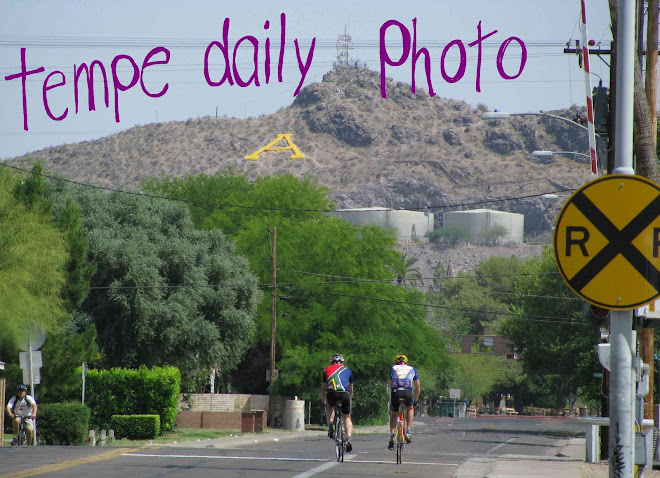 The Salt River Union Pacific Bridge is significant not only because of its age and size, but also because of is durability in the face of heavy flooding, which destroyed three previous bridges in this location. It is on the site of the earliest railroad crossing of the Salt River. The first railroad bridge, built at this crossing in 1887, was washed away in 1891. The second bridge fell victim to a flood in 1905.
The Salt River Union Pacific Bridge is significant not only because of its age and size, but also because of is durability in the face of heavy flooding, which destroyed three previous bridges in this location. It is on the site of the earliest railroad crossing of the Salt River. The first railroad bridge, built at this crossing in 1887, was washed away in 1891. The second bridge fell victim to a flood in 1905.During 1905, the newly organized Arizona Eastern Railroad built a bridge on a slightly different alignment. It was founded on ten sets of concrete-filled steel cylinder drums anchored in the bedrock of the river. The nine spans were moved to the site from various locations in Texas, creating a workable but temporary structure. The present bridge was built by the Arizona Eastern in 1912-1913 on the old 1905 piers, but with nine through truss spans manufactured by the American Bridge Company. This structure has since dependably served the railroad for seventy years. During the floods of 1980-1981, when most crossings of the Salt River were closed, the commuter train "Hattie B" was able to take workers from the east valley to Phoenix via the Salt River Southern Pacific Railroad Bridge (its name before the recent acquisition of Southern Pacific by the Union Pacific Railroad).
The Salt River Union Pacific Railroad Bridge at Tempe is a 1,291-foot long, nine-span. Pratt type through truss bridge. It consists of two 100-foot through riveted trusses, five 150-foot through truss pin connected spans, and two 160-foot through truss pin connected spans. The spans are arranged so that one 100-foot span is at each end of the bridge, while the to 160-foot trusses and the five 150-foot trusses are between the shorter spans. The approaches consist of a 178-foot ballasted deck trestle at the north end and a 223-foot ballasted deck trestle at the south end of the bridge. Roadway extensions at each end add 10 feet, 6 inches, for an overall length of 1,692 feet. The structure rests on ten pairs of concrete filled steel cased pilings that were sunk in 1905 as part of a previous bridge. The approach spans rests on wooden timbers. The flooring material is treated timber covered with ballast. The bridge is structurally sound and sturdy and is in daily use. And immediately next to the bridge is the new Metro light rail bridge which will be in action beginning this December.

1 comment:
Let's hope the light rail bridge is just as sturdy! We will see during the first monsoon storm how it does...
Post a Comment